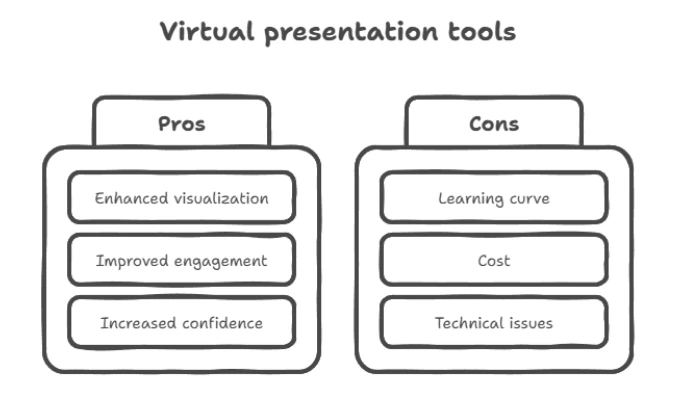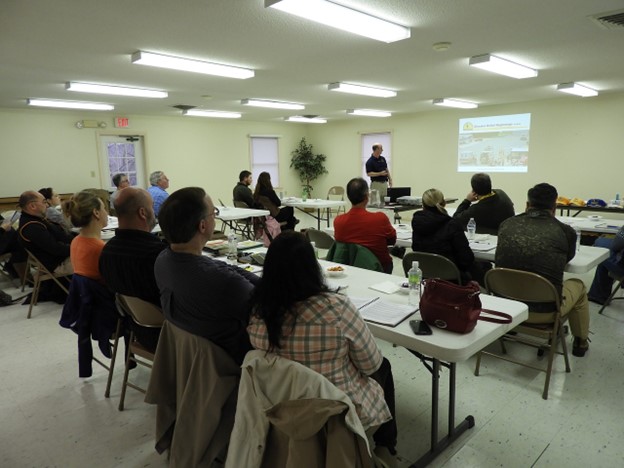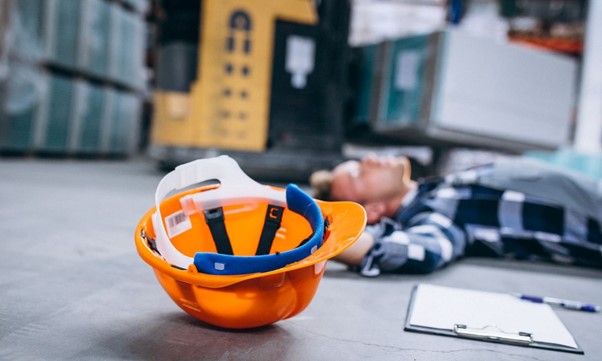Eight months ago, I watched a seasoned commercial real estate broker named Jennifer almost lose the biggest deal of her career – a $12 million office building sale – because she relied on static PowerPoint presentations and printed floor plans to communicate with out-of-state investors who couldn’t visualize the property’s potential.

Jennifer had 15 years of successful CRE experience and had always closed deals using traditional presentation methods: printed marketing materials, static floor plans, and in-person property tours. When COVID-19 made travel difficult, she adapted by conducting virtual meetings through Zoom, sharing her screen to show the same PowerPoint slides and PDFs she’d always used.
The problem became apparent during her first virtual presentation to a California investment group considering a lease on a building in Suffolk County. Knowing that the estimated lease rates for Commercial Real Estate in Suffolk County, NY begin at $5/SF/MO, the investors struggled to understand why Jen charged more, basing her decision on the spatial relationships. It was hard for them to visualize from 2D floor plans how the lobby renovation would impact tenant flow, and asked repeatedly for different angles and perspectives that Jennifer’s static materials couldn’t provide.
After three unsuccessful virtual presentations over six weeks, the investment group was losing interest. They complained that the property “didn’t feel real” through screen-shared PDFs and that they couldn’t understand how the proposed tenant improvements would enhance rental rates and occupancy.
Jennifer was facing the loss of a $360,000 commission when a colleague suggested she try using a virtual whiteboard platform to create an interactive property presentation. Initially skeptical about “tech tools,” Jennifer reluctantly invested $89/month in a collaborative visualization platform.
Why Traditional CRE Presentations Fail in Remote Business Environments
The fundamental problem with traditional commercial real estate presentations isn’t just limited visual appeal – it’s that static materials can’t facilitate the collaborative decision-making processes that complex property transactions require.
PowerPoint slides and PDF floor plans force stakeholders into passive consumption rather than active engagement, preventing the exploratory discussions and “what-if” scenarios that help buyers understand property potential and investment returns.
Hidden Costs of Inadequate CRE Presentation Technology
Understanding the true financial impact of poor presentation tools requires analyzing how communication failures affect deal velocity, client satisfaction, and competitive positioning in commercial real estate transactions.
Extended Sales Cycles and Opportunity Costs
Inadequate visualization tools extend the time required to communicate property value propositions, leading to longer sales cycles that increase carrying costs for sellers while creating opportunities for competing properties to capture buyer attention.
Competitive Disadvantage and Lost Opportunities
Brokers using outdated presentation methods lose deals to competitors offering sophisticated virtual property experiences, regardless of property quality or pricing advantages, as sophisticated buyers increasingly expect interactive and immersive presentation experiences.
Client Satisfaction and Relationship Impact
Stakeholder frustration increases when presentations fail to answer basic questions about space utilization, renovation potential, or investment scenarios, creating negative impressions that persist throughout transaction processes.
How Virtual Whiteboards Transform Commercial Real Estate Communication
Understanding how interactive visualization works differently from traditional presentations helps explain why virtual whiteboards provide superior communication effectiveness while reducing transaction timelines and increasing deal success rates.
Real-Time Collaborative Exploration vs. Static Information Delivery
Virtual whiteboards enable multiple stakeholders to simultaneously explore property information, annotate concerns, ask questions, and test scenarios during live presentations rather than passive consumption of predetermined content.
Visual Scenario Planning and Financial Modeling Integration
Virtual whiteboards can integrate financial modeling tools that enable real-time ROI calculations, cash flow projections, and investment scenario comparisons while maintaining visual connection to specific property features and improvement opportunities.
Enhanced Remote Relationship Building
Interactive presentations create shared experiences that build trust and rapport between remote stakeholders who might otherwise feel disconnected from both properties and transaction partners.
Strategic Implementation of Virtual Whiteboards in CRE Operations
Successfully integrating interactive presentation technology into commercial real estate practices requires systematic approaches that enhance rather than complicate existing client relationship and transaction management processes.
Client-Specific Presentation Customization
Develop template libraries for different property types and transaction structures that can be quickly customized for specific client presentations while maintaining consistent professional quality and brand standards.
Integration with Existing CRM and Marketing Systems
Choose virtual whiteboard platforms that integrate with existing customer relationship management systems to maintain consistent client communication records and follow-up processes.
Team Training and Adoption Strategies
Implement gradual adoption processes that allow team members to develop confidence with interactive presentation tools before using them in high-stakes client situations.
Create internal best practices documentation that captures successful presentation techniques and common problem solutions to accelerate team-wide capability development.
Technology Selection Criteria for CRE Professionals
Essential Features for Commercial Real Estate Applications
Choose platforms that support high-resolution floor plan import and interactive navigation capabilities that enable detailed property exploration without losing visual quality or spatial accuracy.
Ensure real-time collaboration features allow multiple participants to simultaneously view, annotate, and modify presentations during live meetings without technical difficulties or performance limitations.
Scalability and Enterprise Considerations
Select solutions that can accommodate varying team sizes and client group requirements without sacrificing performance or requiring expensive upgrades for larger presentations.
Evaluate security features and compliance capabilities that meet institutional investor and corporate tenant requirements for confidential information handling and data protection.
Mobile and Remote Access Requirements
Ensure platforms provide consistent functionality across desktop, tablet, and mobile devices to accommodate different stakeholder preferences and meeting environments.
Verify offline access capabilities for presentations in locations with limited internet connectivity while maintaining interactive features and visual quality.
Advanced Applications Beyond Basic Property Presentations
Development Project Planning and Stakeholder Alignment
Virtual whiteboards enable collaborative master planning sessions where developers, architects, and investors can explore different site configurations, phasing strategies, and design alternatives in real-time.
Construction timeline visualization helps coordinate multiple contractor teams and stakeholder groups while maintaining clear communication about dependencies, milestones, and potential conflicts.
Portfolio Management and Investment Analysis
Multi-property portfolio presentations become more effective when interactive tools enable comparative analysis, market positioning evaluation, and strategic planning across different assets and geographic markets.
Asset performance tracking and reporting gain clarity when visual dashboards integrate occupancy data, financial metrics, and market comparisons in formats that facilitate strategic decision-making.
Tenant Relations and Space Planning
Lease renewal negotiations benefit from interactive space planning tools that help tenants visualize expansion options, layout modifications, and efficiency improvements that justify rental rate discussions.
Tenant improvement planning becomes collaborative when landlords and tenants can explore design alternatives, cost implications, and timeline requirements through shared visual platforms.
Measuring Success and ROI from Interactive Presentation Technology
Deal Velocity and Conversion Metrics
Track average time from initial presentation to signed contracts when using interactive versus traditional presentation methods to quantify efficiency improvements and competitive advantages.
Monitor presentation-to-proposal conversion rates to understand how effectively interactive tools communicate value propositions and generate qualified buyer interest.
Client Satisfaction and Relationship Quality
Measure client feedback scores and testimonial quality improvements when interactive presentations enhance understanding and engagement during property evaluation processes.
Track referral rates and repeat business generation to understand how presentation quality impacts long-term client relationships and business development effectiveness.
Operational Efficiency and Productivity
Calculate time savings from reusable presentation templates and content libraries compared to creating custom materials for each property and client presentation.
Measure reduction in follow-up meeting requirements when interactive presentations answer more stakeholder questions during initial sessions.
Case Studies: Virtual Whiteboard Success in Commercial Real Estate
Realmo in Action: Visual Collaboration for Real Projects
I’ve been particularly impressed with how Realmo has streamlined projects for many CRE teams. Take, for example, a recent project involving the renovation of a historic downtown building. The initial challenge was communicating the design vision to a diverse group of stakeholders, including the property owner, the architect, the construction manager, and potential tenants.
During the first meeting, the team took advantage of Realmo’s interactive 3D modeling and annotation capabilities to create a virtual walkthrough of the proposed renovations. Stakeholders were able to explore the design, provide feedback, and identify potential issues in real-time– from any location imaginable. This approach not only enhanced client and tenant communications, but boosted team productivity.
The results were remarkable: the design review process was shortened by 40%, and the project remained on schedule and within budget. Realmo helped the team turn what could have been a messy and disjointed process into a streamlined and collaborative experience, solidifying my faith in visual collaboration, and showing me a path toward expertise.
Ultimately, what began with a great platform allowed me to impart my expertise in the visual collaboration space. By making these tools so easily accessible, Realmo is a surefire tool to ensure projects run smoothly.
The Historic Building Renovation Marketing Campaign
A developer converting a historic downtown building into modern office space needed to pre-lease 60% of the space before construction completion to satisfy financing requirements. Traditional marketing materials couldn’t effectively communicate how the renovation would transform the space while preserving historic character.
Using virtual whiteboard technology, the developer created interactive presentations that showed before-and-after comparisons, allowed prospects to explore different floor plate configurations, and enabled collaborative space planning during leasing meetings..
Future Evolution of Interactive CRE Presentations
Artificial Intelligence and Automated Content Generation
AI-powered platforms will automatically generate interactive presentations by analyzing property data, market comparisons, and client preferences to create customized presentations that optimize for specific stakeholder interests and decision criteria.
Machine learning algorithms will analyze successful presentation patterns to suggest content modifications, timing adjustments, and interactive elements that increase conversion rates and client satisfaction.
Virtual and Augmented Reality Integration
Immersive virtual reality experiences will enable stakeholders to conduct realistic property tours from remote locations while maintaining the spatial understanding and emotional connection that drive purchase decisions.
Augmented reality applications will overlay financial data, renovation possibilities, and market information onto real property views during in-person or virtual tours, enhancing analytical capabilities.
Advanced Data Integration and Analytics
Real-time market data integration will enable presentations that automatically update rental comparisons, occupancy trends, and investment metrics to ensure accuracy and relevance during extended decision processes.
Predictive analytics will identify optimal presentation timing, content selection, and interactive elements based on client behavior patterns and successful transaction histories.
Making Smart Decisions About Interactive Presentation Technology
Jennifer’s near-$480,000 disaster demonstrates that traditional presentation methods create greater risks than the minimal investment required to implement sophisticated virtual collaboration capabilities.
Key principles for successful interactive presentation adoption include:
- Start with Client Value: Choose technology based on how it enhances client understanding and decision-making rather than impressive features that don’t address real communication challenges.
- Integrate with Existing Workflows: Select platforms that enhance rather than replace existing client relationship and transaction management processes to minimize disruption during implementation.
- Invest in Quality Training: Ensure team members develop confidence and expertise with interactive tools before using them in critical client situations that determine deal outcomes.
- Measure and Optimize Performance: Track conversion rates, client feedback, and deal velocity to continuously improve presentation approaches based on real results rather than assumptions.
- Plan for Technology Evolution: Choose scalable solutions that can incorporate emerging capabilities like AI, VR, and advanced analytics rather than limiting future potential through short-term cost optimization.
For commercial real estate professionals ready to modernize their client communication capabilities, interactive presentation technology represents essential infrastructure that determines competitive positioning rather than optional enhancement.
Guest writer


























